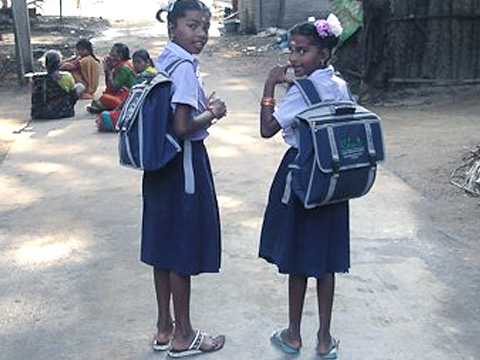Penned by Board Member Ms. Alo Pal
The Old Model
15 years back children at the Sharana daycare and drop-in center spent the nights on the streets, not getting much sleep, after a day left to fend for themselves while their parents worked. Our daycare and a drop-in center ensured that they had access to a shower, a few hours of restful sleep, some warm healthy food, a few recreational activities, and most importantly shielded from sexual predators, peers, and older children who indulged in petty crime and substance abuse, child labor rackets, begging or otherwise and abject neglect.
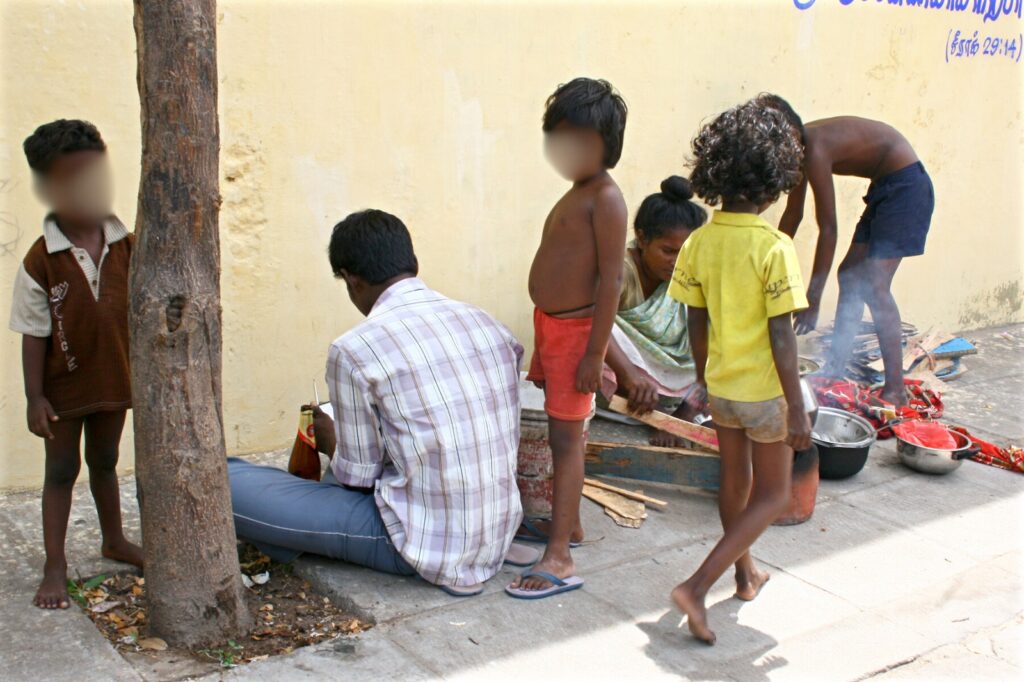
Children on the road side
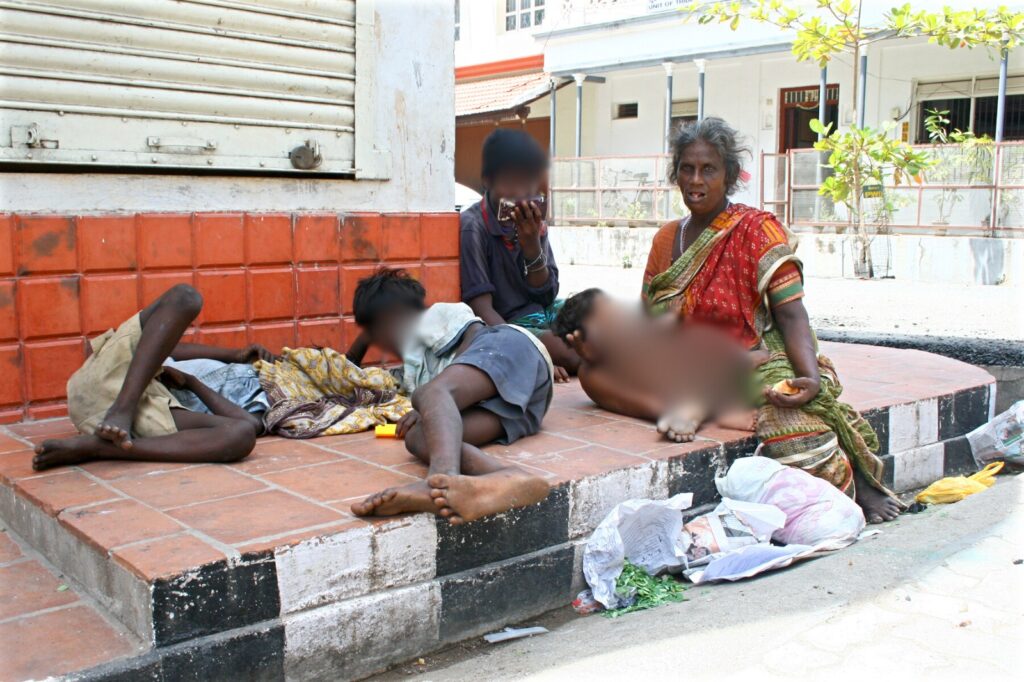
Children sleeping outdoor
Changing Needs
Over time this model had to be reviewed due to changed circumstances and even improved circumstances. Many of the families of the children moved from the streets into slums. We saw fewer children on the streets selling stickers and doing other odd jobs trying to earn money. Sharana’s extensive outreach and close collaboration with parents ensured that most children attended school, despite facing daily psycho-social and economic challenges at home. Sharana supported both the children and their families through these difficulties. Gradually the drop-in became primarily to keep adolescents off the streets and street corners over the weekends.
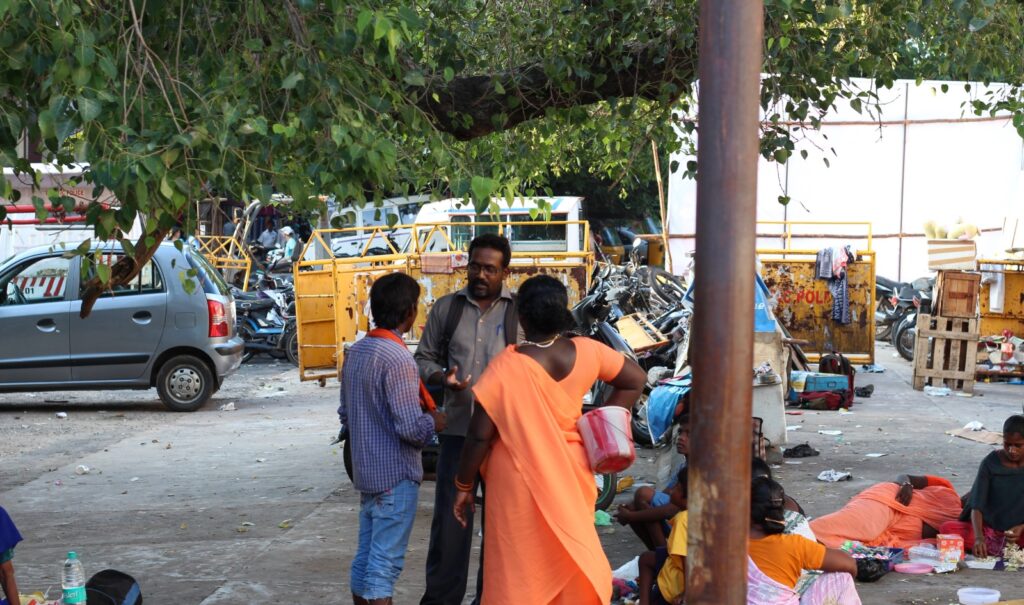
Program Manager, Mr. Manuel during outreach
Constants and Changing Influences
In over two decades of work on the streets and slums of Pondicherry, catering to families and children who are overwhelmingly from Below the Poverty Line (BPL) families, identified by red “Ration Cards” (This makes them eligible for government dole in terms of free or highly subsidized food grains and other amenities), one of the most consistent vices noticed, that renders the lives of the children particularly wretched, is that of rampant alcoholism and the ensuing abuse, neglect, lack of sense of responsibility and decency of parents vis-à-vis their children. This continues to remain a problem to this day, though we have made improvements in ensuring that most of the children attend school and mothers are empowered to handle abuse and exploitation and even helped to start or enhance businesses with loans.
Earlier exposure to social influences, trends, and visuals feeding into the eager minds and bodies of adolescents was restricted to movies and television. We have seen many cases of bad role models and depraved sexual and violent behavior normalized and even idolized by these children because of the way these were represented and validated on celluloid. With adolescent hormones raging, we saw an erosion of the little moorings and moral compass the children might have had about love, sex, drugs, and alcoholism.
Today though this has deteriorated even more sharply. Access to the smartphone and cheap data packages has made pornography watching rampant. This has negatively impacted and damaged these children with little or no supervision and no role model. Until now, we at Sharana had thought that regular outreach and updates with the families were adequate to keep an eye on these children, but now we believe otherwise.
Who Are These Children Exactly
Under the Back to School (BTS) program at Sharana, hundreds of children are sent to school. College and even aid for higher education, closely monitored by our social workers, given access to our homework help centers, those eligible are enrolled in our Digital and Language Lab programs, those who drop out are mentored to continue their education and those who discontinue are guided and sponsored and enrolled in recognized institutions that impart and certify our children with a degree in a viable vocation.
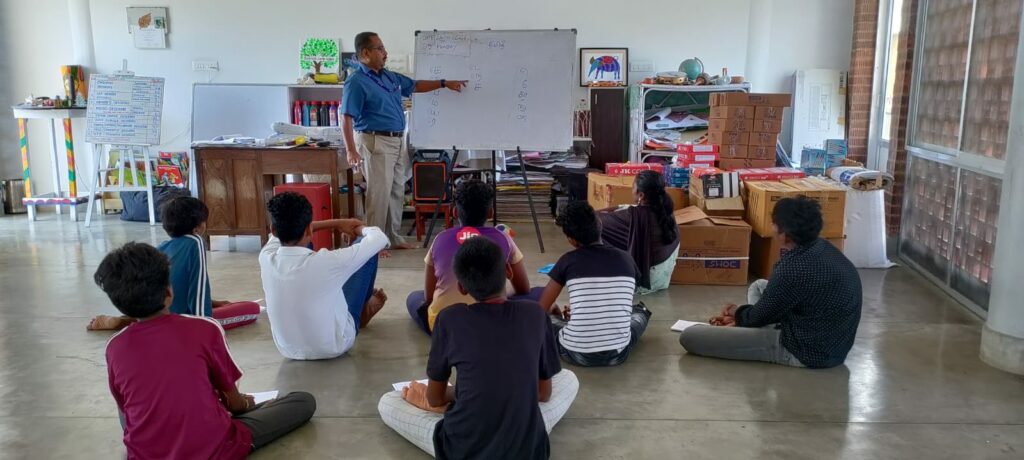
Drop-in Centre children learning Tamil at our Social Centre
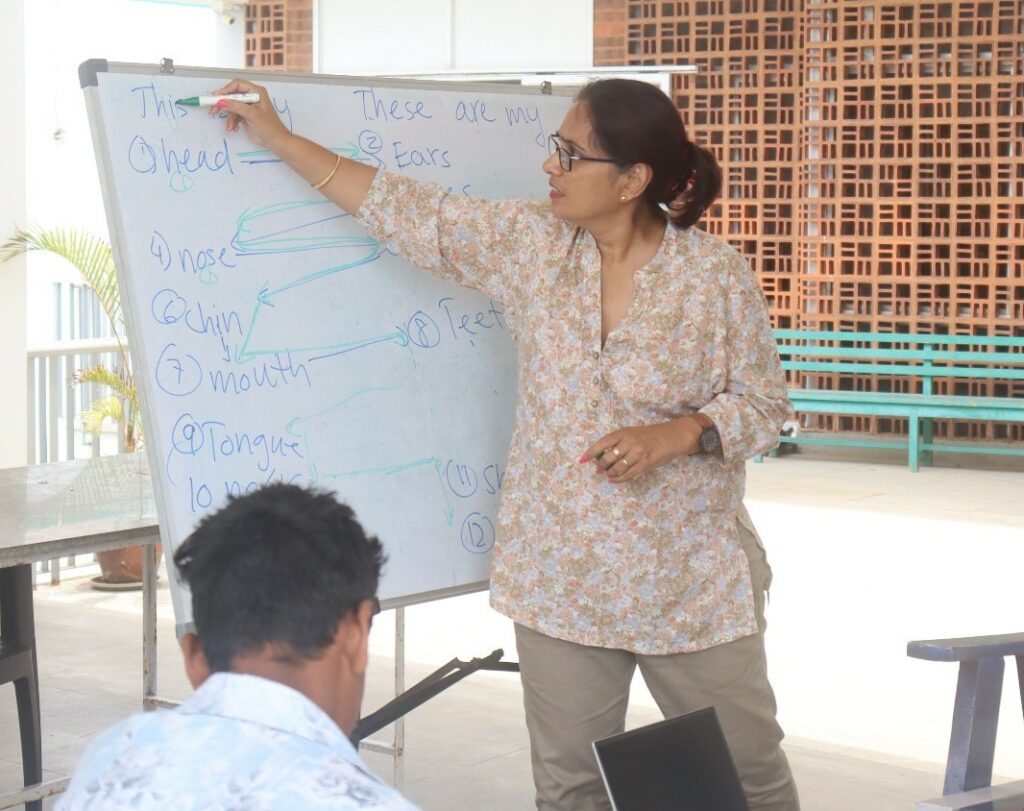
These are not part of the Drop-In children we have been keeping in the safe space of Sharana since March this year.
These are adolescents who have dropped out of school at a much younger age. Some of them are illiterate, some of them have some rudimentary knowledge of the alphabet, and some of them write but on closer look what they scribble could be letters or patterns from a hieroglyph or a pattern of symbols they know not the meaning of. Most have little to no attention span, even in an informal “classroom” set up in a child-friendly environment of the Shanara Social Centre, with instructors and resource persons giving them individual attention it is an uphill task to sustain the interest and attention of these children and record progress.
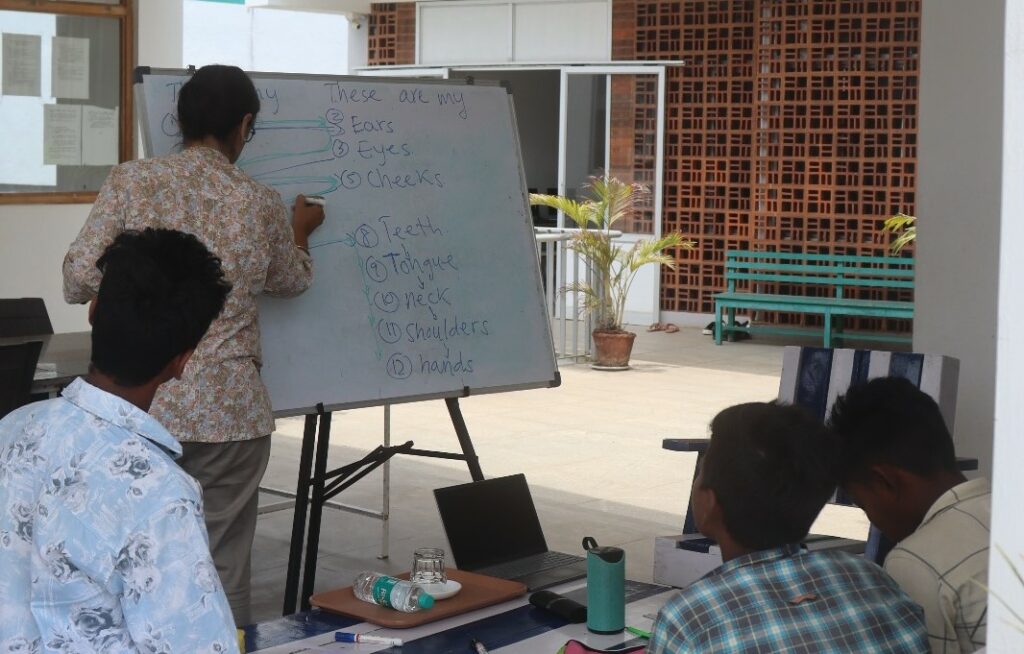
Drop-in Centre children learning English with our Board Member, Ms. Alo
But the lack of schooling is the least of their problems.
They have no awareness of their lack of grooming and rudimentary guidance in upbringing even for basic decent interaction. Just below their usual behavior, there lurks belligerence and violence and a complete oblivion of the environment they are in. Many of them have a pattern of doing some work, be it fishing or manual labor, making some money, blowing it off in drugs or alcohol, indulging in hours of watching pornography, and while away time at street corners like predators. This pattern is just one disastrous mishap away from breaking the law and committing heinous crimes.
But most important of all as a professional organization in the business of caring for children, we recognize that these are children of abject neglect. The impact of this most cruel form of child abuse has resulted in them becoming pariahs in their societies, left to fend for themselves without mentors and guides, leading an aimless hopeless life on the edge.
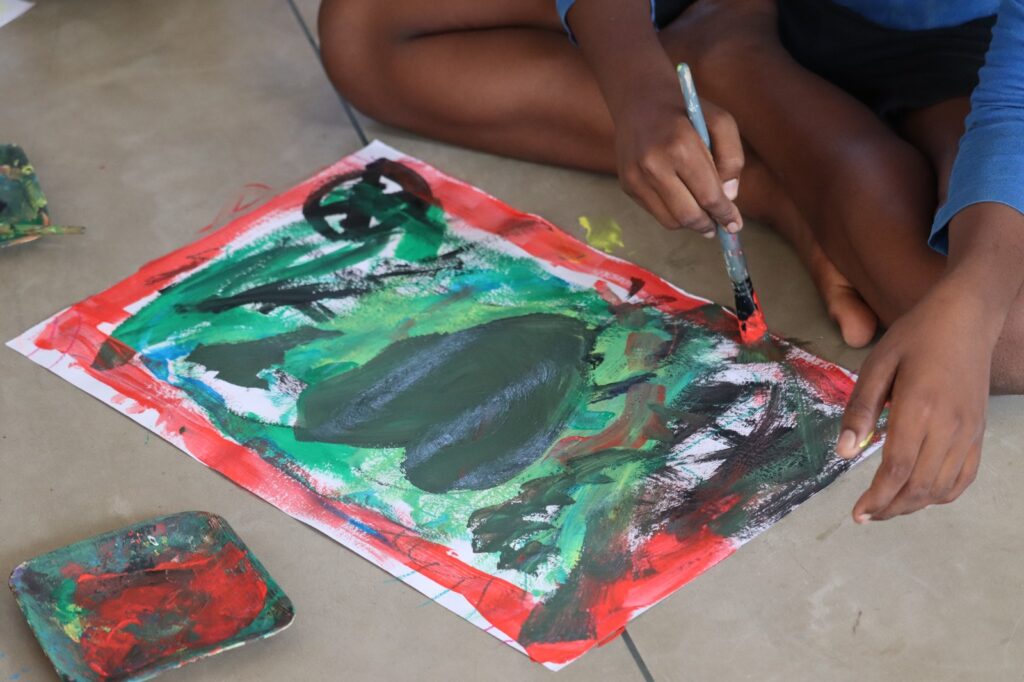 After we lost Aarthi this year to a dastardly rape and murder by a drug addict youngster we at Sharana realized that it was our responsibility and duty to keep adolescents of similar profiles off the streets, in the clean, sane, and safe environment of Sharana and devise a program to give these children a sense of self, to make them understand that they matter and slowly and patiently devise a structure and explore avenues of training reintegration of these children into society as productive, responsible law-abiding citizens.
After we lost Aarthi this year to a dastardly rape and murder by a drug addict youngster we at Sharana realized that it was our responsibility and duty to keep adolescents of similar profiles off the streets, in the clean, sane, and safe environment of Sharana and devise a program to give these children a sense of self, to make them understand that they matter and slowly and patiently devise a structure and explore avenues of training reintegration of these children into society as productive, responsible law-abiding citizens.
This then is the aim of the drop-in center. It is challenging and it is a challenge where failure is not an option.










